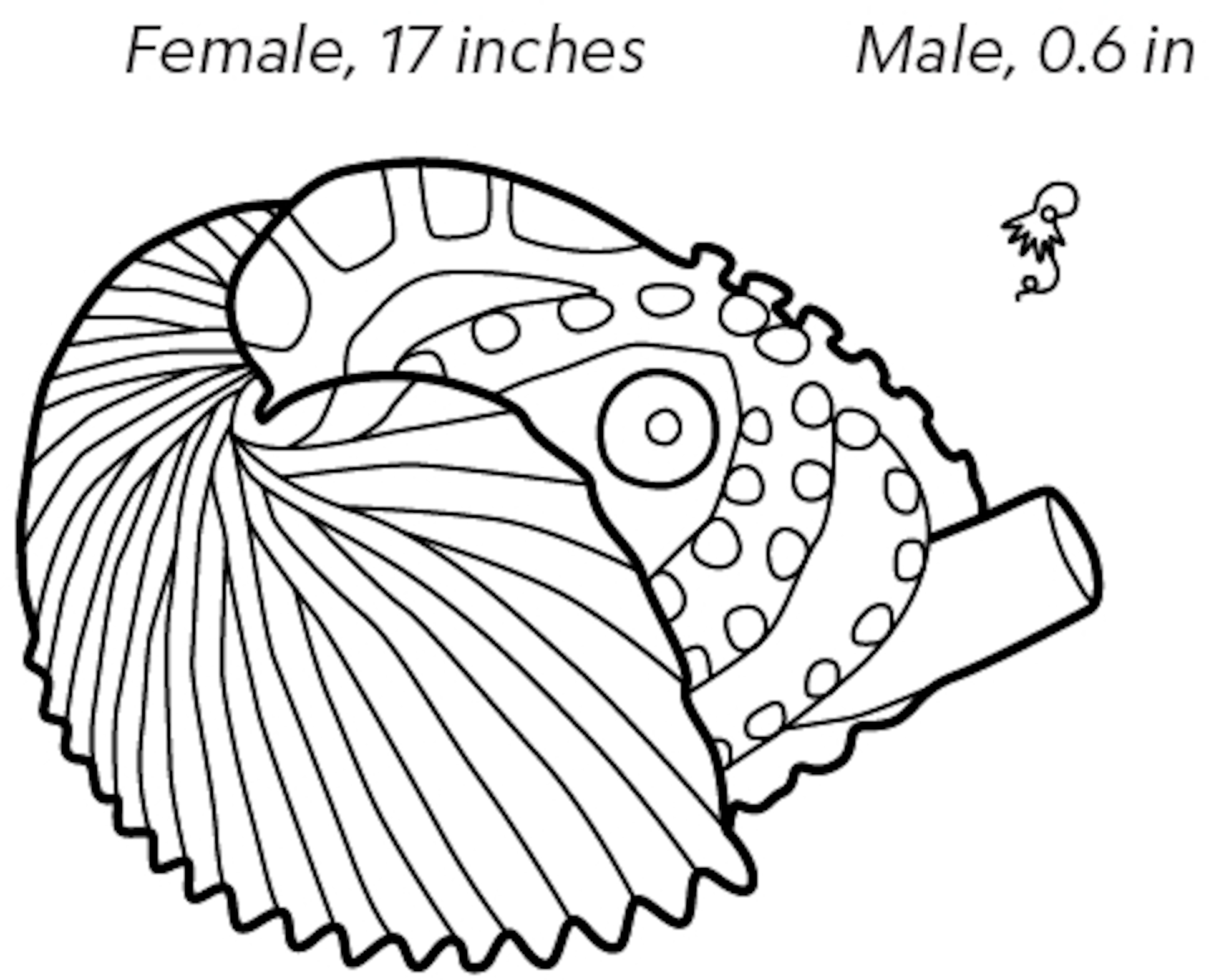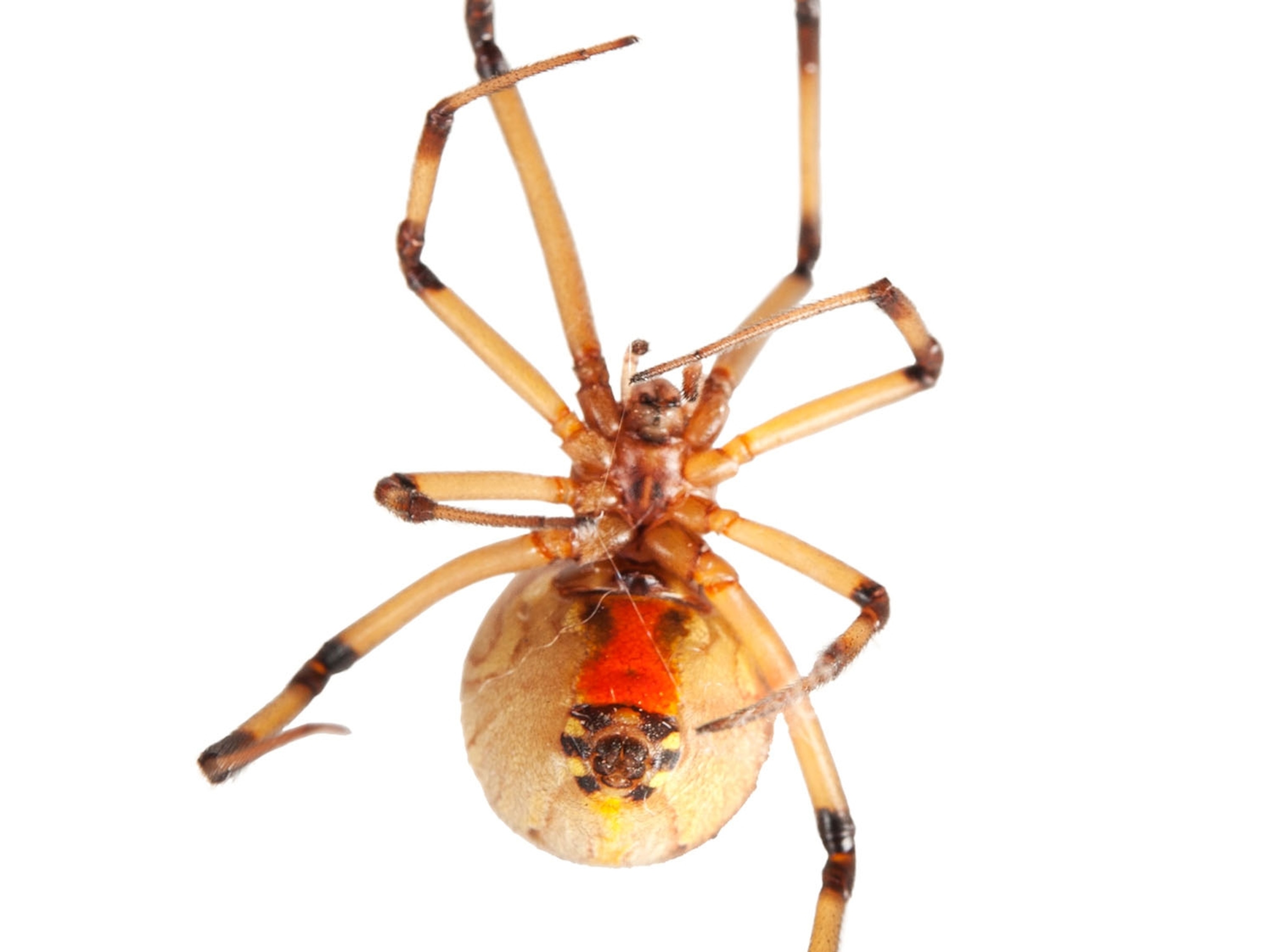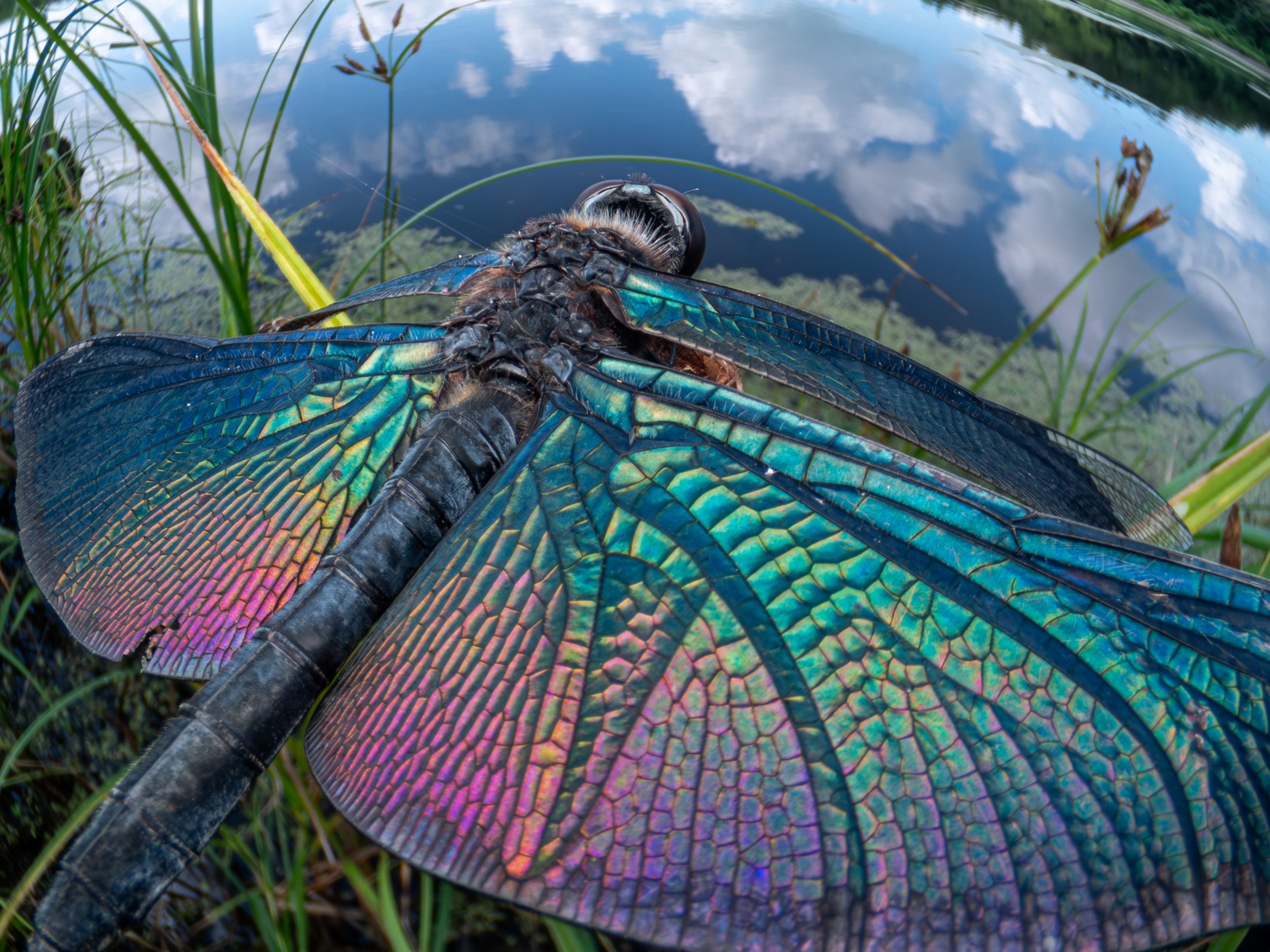
To mate, this octopus gives life and limb
The tiny male argonaut lodges a detachable, sperm-bearing tentacle in a female up to 30 times his size.
Lest you doubt the awesome power of the drive to procreate, consider what Mr. and Mrs. Argonaut (Argonauta argo) must go through to send baby argonauts out into the world.
This octopus species lives in open water in Earth’s tropical and subtropical seas. It’s not the easiest place to find a mate, especially since the male is tiny—less than three-quarters of an inch long—while the female can be up to 30 times his size. She has two specialized dorsal arms that secrete a chalky substance, forming a pleated shell in which she can hide, float, and brood eggs. The male is sans shell, but he too has a specialized arm: a tentacle-like, detachable copulatory organ called a hectocotylus.

After attaching to the female, the male releases his hectocotylus, which worms its way into the female’s mantle cavity. She may stockpile these disembodied sperm arms from several mates and use them to fertilize her eggs over time. She’ll lay strings of eggs tethered to her shell (also called an egg case) where she can tend them as they develop. Scientists know this because they’ve been able to observe argonaut mothers live—but not fathers.
After donating his paternal part, no male has been seen alive growing a new one; only dead specimens have been found. As his last act, the small but mighty paterfamilias gives an arm and a life to the cause of reproduction.
Greater argonaut (Argonauta argo)
1. Name game
This species of octopus is also known as the paper nautilus (the shell it builds to hold its eggs is made of paper-thin calcium carbonate). The Chinese name for the species translates to “white seahorse’s nest.”
2. Argonaut myth
In 300 B.C. Aristotle described his vision of a female argonaut using her shell as a boat and her tentacles as sails and oars. In 2010 octopus experts Julian Finn and Mark Norman documented what actually occurs: The argonaut moves by expelling jets of water, surfaces enough to trap air in her shell, then is buoyed at an optimal water level by the air bubble.
3. Common, elusive
Though rarely seen by humans, A. argo is widespread in Earth’s more tropical oceans. It’s preyed upon by tuna, dolphins, and billfishes but still described as of least concern on the IUCN Red List of Threatened Species.





